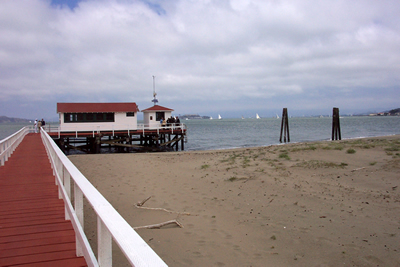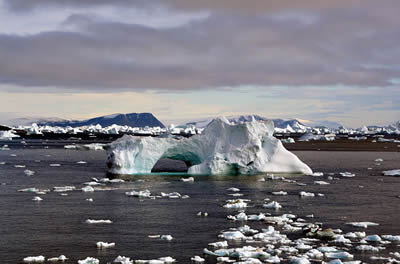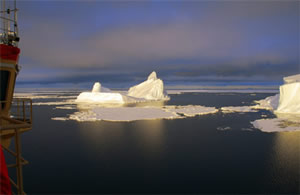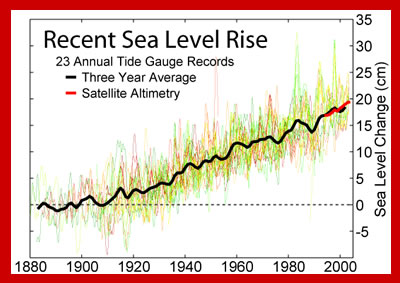This graph shows the change in sea level since 1880. Sea level rose more than 18 centimeters during the 20th Century. The data used to make this graph come from 23 tide gauges. The thick black line is an average.
Click on image for full size
Courtesy of Robert A. Rohde/Global Warming Art Project
Climate Change and Sea Level Rise
Sea level is creeping higher each year as the Earth warms. As sea level continues to rise, there are many low coastal areas worldwide where homes, towns and cities are in danger of being flooded
Currently, global sea level is rising about 3 mm per year (about 1/8 inch.) Scientists are still trying to pin down exactly how much sea level rise we can expect during the 21st Century. The Intergovernmental Panel on Climate Change estimates 18-59 centimeters (7-23 in) of sea level rise. If an ice sheet were to slide into the ocean, that estimate would be much higher.
How does global warming cause sea level to rise? There are two reasons. First, when climate warms, water that is on land in glaciers and ice sheets melts and makes its way down rivers to the ocean. Second, as seawater warms, the water molecules move further apart which makes the water take up more space. Scientists suspect that more than half of sea level rise today is due to warmed and expanded sea water.
Many people live in coastal areas around the world. Rising sea level could cause their homes to flood and their land to erode. Seawater could get into their drinking water and farms could become flooded. Many countries are looking for ways to protect the places where people live from rising seas.
You might also be interested in:

Sea level is the height of the ocean surface. Scientists measure sea level to figure out how much sea level rise is happening now because of global warming. If you tried to draw a flat line at the top
...more
Earth’s climate is getting warmer. During the past 100 years Earth’s average temperature rose about 0.6° Celsius (1.0° F). Things that people are doing like burning fossil fuels, changing the way land
...more
This page is not yet developed at the elementary level. Please check back for updates or click on the "Intermediate" button above for information.
...more
Rivers are very important to Earth because they are major forces that shape the landscape. Also, they provide transportation and water for drinking, washing and farming. Rivers can flow on land or underground
...more
There is a lot of ice on Greenland. But as our planet gets warmer, Greenland’s ice is melting. Scientists have figured out that the ice is melting faster now. More ice melted during the summer of 2007
...more
Did you know that even if you have never seen an iceberg or glacier, the snow and ice of the Earth’s cryosphere has a big impact on the climate where you live? Changes in the amounts of snow and ice on
...more
About 250 million years ago, almost all of the life in the sea became extinct. This was during a huge mass extinction. Mass extinctions are when the number of different living things shrinks. Over about
...more















